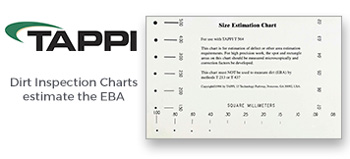 Search
Search
Use the search bar or filters below to find any TAPPI product or publication.
Filters
Content Type
Publications
Level of Knowledge
Committees
Event Type
Collections
Webinars

Circular Packaging Products from Polysaccharides
Circular Packaging Products from Polysaccharides There is a strong drive to discover and develop alternatives to conventional plastics that offer the ability to be manufactured and used in a circular
Webinars

Events

Sustainability Versus Nanocellulose in Diverse Applications
TAPPI International Nanotechnology Division Webinar
Journal articles

Magazine articles

Understanding extensibility of paper: Role of fiber elongation and fiber bonding, TAPPI Journal March 2020
ABSTRACT: The tensile tests of individual bleached softwood kraft pulp fibers and sheets, as well as the micro-mechanical simulation of the fiber network, suggest that only a part of the elongation potential of individual fibers is utilized in the elongation of the sheet. The stress-strain curves of two actual individual pulp fibers and one mimicked classic stress-strain behavior of fiber were applied to a micromechanical simulation of random fiber networks. Both the experimental results and the micromechanical simulations indicated that fiber bonding has an important role not only in determining the strength but also the elongation of fiber networks. Additionally, the results indicate that the shape of the stress-strain curve of individual pulp fibers may have a significant influence on the shape of the stress-strain curve of a paper sheet. A large increase in elongation and strength of paper can be reached only by strengthening fiber-fiber bonding, as demonstrated by the experimental handsheets containing starch and cellulose microfibrils and by the micromechanical simulations. The key conclusion related to this investigation was that simulated uniform inter-fiber bond strength does not influence the shape of the stress-strain curve of the fiber network until the bonds fail, whereas the number of bonds has an influence on the activation of the fiber network and on the shape of the whole stress-strain curve.
Surface-engineered cellulose nanofibrils as template for crystallization of hydroxyapatite and its application, 2011 TAPPI International Conference on Nanotechnology for Renewable Materials
Surface-engineered cellulose nanofibrils as template for crystallization of hydroxyapatite and its application, 2011 TAPPI International Conference on Nanotechnology for Renewable Materials
Activated Fibers as Wet Strength Agent, 2011 TAPPI International Conference on Nanotechnology for Renewable Materials
Activated Fibers as Wet Strength Agent, 2011 TAPPI International Conference on Nanotechnology for Renewable Materials
Implementation of Thin-Layer Molecular Self-Assembly Technologiesinto Current Paper Making Processes Production Trials, 2011 TAPPI International Conference on Nanotechnology for Renewable Materials
Implementation of Thin-Layer Molecular Self-Assembly Technologiesinto Current Paper Making Processes Production Trials, 2011 TAPPI International Conference on Nanotechnology for Renewable Materials
NANO-FIBRILLATED CELLULOSE AS A PAPER SURFACE TREATMENT FOR INKJET PRINTING, 2011 TAPPI International Conference on Nanotechnology for Renewable Materials
NANO-FIBRILLATED CELLULOSE AS A PAPER SURFACE TREATMENT FOR INKJET PRINTING, 2011 TAPPI International Conference on Nanotechnology for Renewable Materials





